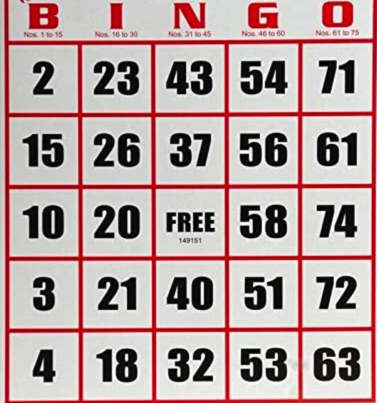Bingo
Level: AdvancedConcepts: Algorithms
Bingo is a game of chance played using cards with numbers printed on them, which are marked off of the card as the caller reads out some manner of random numbers. Play usually ceases once a certain pattern is achieved on a card, where the winner will shout out "Bingo!" in order to let the caller and the room know that there may be a winner.
There are lots of different variations of Bingo, each with their own specific rules. Classic US Bingo is perhaps the most well known, where the game is played using a 5x5 grid of numbers between 1 and 75, with a FREE space in the middle. There is also a UK version of Bingo, which uses a 9x3 grid of spaces containing numbers between 1 and 90, of which five spaces on each row are filled in
To get the best reach for our Bingo game, we are going to model it on the US version to begin with. To make this work, we are going to need to be able to call out numbers, generate Bingo cards for people to play with, and check their cards when someone calls Bingo. Once we have got these basics in place, we can then start to add new features or tweak the way it works.
Calling Bingo Numbers
- When a number is called it is between 1 and 75 inclusive.
- No number repeats in a game. That is if 75 numbers are called they all appear once.
Bingo Card Generation
-
When generating a bingo card it must contain 25 unique spaces.
There shall be 5 columns (BINGO) and each column shall contain 5 unique numbers according to the following rules.
The exception to this is the N column, it's 3 space should be left blank as a free space.
| Column | Lower Bound | Upper Bound |
|---|---|---|
| B | 1 | 15 |
| I | 16 | 30 |
| N | 31 | 45 |
| G | 46 | 60 |
| O | 61 | 75 |
Example Card

Checking Bingo Cards
- A bingo may only be called when a player can from a vertical, horizontal or diagonal line from the called numbers.